
Benjamin Culme (1581-1657), Doctor of Divinity, was an English Anglican clergyman who served as Dean of St Patrick's Cathedral, Dublin, Ireland, from 1625 until 1649. [1] [2]

Benjamin Culme (1581-1657), Doctor of Divinity, was an English Anglican clergyman who served as Dean of St Patrick's Cathedral, Dublin, Ireland, from 1625 until 1649. [1] [2]
He was born at Canonsleigh Abbey in the parish of Burlescombe, in Devon, a younger son of Hugh III Culme (c. 1543–1618), of Molland-Champson, of Weycroft, Axminster and of Canonsleigh, all in Devon, [3] by his wife (whom he married in 1568 at Exeter) Mary Fortescue, a daughter of Richard Fortescue (c. 1517–1570) of Filleigh, Devon. His elder brother was Richard I Culme (c. 1571–1649) of Canonsleigh, a lawyer of the Inner Temple who served as Sheriff of Devon. [4]
In 1637 in Ireland he married Deborah Pleydell (1623-1695) a daughter of Sir Charles (or Oliver) Pleydell (son of Gabriel Pleydell (fl. 1519 – c.1591), MP) by his second wife Jane St. John, a daughter of Sir John St. John, four-times a Member of Parliament for Bedfordshire, of Lydiard St John's (now Lydiard Tregoze), Wiltshire. By his wife he had two surviving children:
He attended St Alban's Hall, Oxford, where he obtained a BA degree in 1602, then Lincoln College, Oxford [5] where he received a M.A. on 24 April 1605. He served as Rector of Trim from 1619, and in 1615 was appointed a Prebendary of Malahidert (in St. Patrick's), in 1624 as Precentor of Kilkenny and in 1624 Rector of Rathmore in the diocese of Meath. He was appointed Dean of St Patrick's Cathedral, Dublin, Ireland, which post he held from 1625 until 1649. [6] He fled Ireland due to the Irish Rebellion of 1641 and settled at his wife's paternal estate of Midg Hall (or Mudghill) in the parish of Lydiard St John's in Wiltshire.[ citation needed ]
He died at Lydiard St John's, Wiltshire, on 21 October 1657 [7] aged 76. [8] [9]

The Dean of St Patrick's Cathedral is the senior cleric of the Protestant St Patrick's Cathedral, Dublin, elected by the chapter of the cathedral. The office was created in 1219 or 1220, by one of several charters granted to the cathedral by Archbishop Henry de Loundres between 1218 and 1220.
Boconnoc is a civil parish in Cornwall, England, United Kingdom, approximately four miles (6 km) east of the town of Lostwithiel. According to the 2011 census the parish had a population of 96.
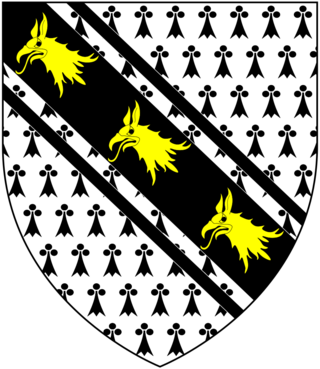
Sir Walter Yonge, 2nd Baronet of Great House, Colyton, and of Mohuns Ottery, both in Devon, was a Member of Parliament for Honiton (1659), for Lyme Regis (1660) and for Dartmouth (1667–70).

Sir John St John, 1st Baronet of Lydiard Tregoze in the English county of Wiltshire, was a Member of Parliament and prominent Royalist during the English Civil War. He was created a baronet on 22 May 1611.

Elize Hele (1560–1635) of Fardel in the parish of Cornwood, Devon and of Parke in the parish of Bovey Tracey, Devon, was an English lawyer and philanthropist. In 1632 he transferred his lands into a trust intended for "pious uses", from which charitable action and in order to distinguish him from his many prominent relations, he became known to posterity as "Pious Uses Hele", which his biographer Prince looked upon "as a more honourable appellation than the greatest empty title". The trustees included his wife, together with John Hele and a number of friends. The trust was used to create a number of schools in Devon including Plympton Grammar School.
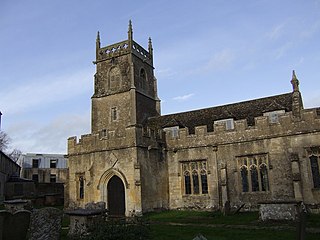
Lydiard Tregoze is a small village and civil parish on the western edge of Swindon in the county of Wiltshire, in the south-west of England. Its name has in the past been spelt as Liddiard Tregooze.
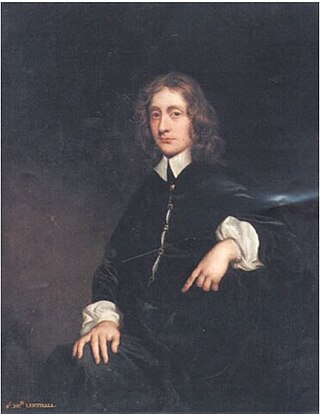
Sir John Lenthall was an English Member of Parliament. He was elected MP for Gloucester in 1645, knighted by Oliver Cromwell in 1658 and made Governor of Windsor Castle from 1657 to 1660. After the 1660 Restoration of the Monarchy he was pricked Sheriff of Oxfordshire for 1672–73 and knighted a second time by Charles II in 1677.

Sir John Morton, 2nd Baronet of Milbourne St Andrew in Dorset, was an English landowner and politician who sat in the House of Commons between 1661 and 1695.

John Harris of Hayne in the parish of Stowford in Devon and of St. Michael's Mount in Cornwall, was a Member of Parliament.
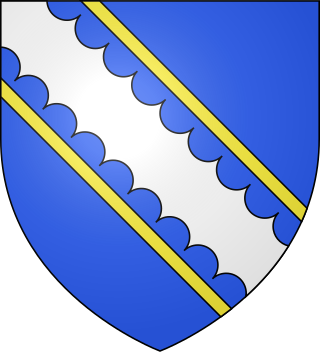
Sir Faithful Fortescue (1585–1666), of Dromiskin in County Louth, Ireland, was Governor of Carrickfergus in Ireland, long the chief seat and garrison of the English in Ulster and was a royalist commander during the English Civil War.

Sir Edward Giles (1566–1637) of Bowden House, Ashprington, near Totnes, Devon, was an English politician who sat in the House of Commons at various times between 1597 and 1629.

Robert Weaver was an English politician who sat in the House of Commons from Jan 1659 to Apr 1659.

The landed gentry and nobility of Devonshire, like the rest of the English and European gentry, bore heraldic arms from the start of the age of heraldry circa 1200–1215. The fashion for the display of heraldry ceased about the end of the Victorian era (1901) by which time most of the ancient arms-bearing families of Devonshire had died out, moved away or parted with their landed estates.
The Manor of Combe Martin was a medieval manor estate in Combe Martin, Devon, England.

The Manor of Molland was a medieval manor in North Devon, England. It was largely co-terminous with the existing parish of Molland, in which is situated the village of Molland. More accurately it consisted from the earliest times of two separate manors, held from separate overlords, later known as Molland-Bottreaux and Molland-Champson.
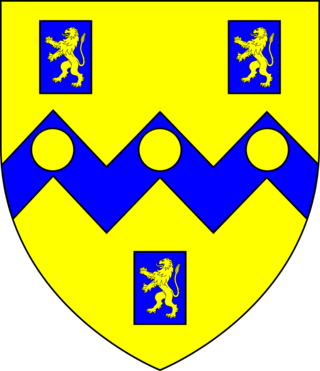
John Rolle (1522–1570) of Stevenstone, in the parish of St Giles in the Wood, near Great Torrington, Devon, was the eldest son and heir of George Rolle, MP, founder of the great Rolle family of Stevenstone, by his second wife Eleanor Dacres. Three monuments survive in memory of his immediate family in the churches of St Giles in the Wood and Chittlehampton.

Mount Radford is an historic estate in the parish of St Leonards, adjacent to the east side of the City of Exeter in Devon.
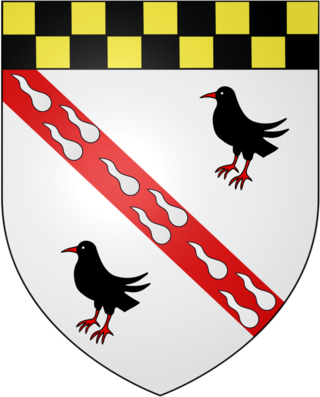
Gabriel Pleydell of Midg Hall in the parish of Lydiard St John in Wiltshire, was an English landowner and politician who served as Member of Parliament for the Wootton Bassett and Marlborough constituencies in the Parliament of England. Pleydell was born before 1519 into a large, affluent family. He entered politics in March 1553 as a member for Wootton Bassett, close to his family estate at Midgehall in Wiltshire. Pleydell's election to the Marlborough constituency two years later may have been made possible by his father's influential connections. He returned to the Wootton Bassett seat at the request of Sir John Thynne in 1563; he had supported Thynne in a dispute over the Knighthood of the Shire in 1559.

Painsford is an historic estate in the parish of Ashprington in Devon.

Spridleston is an historic manor in the parish of Brixton in Devon, England, long a seat of a branch of the prominent and widespread Fortescue family. The ancient manor house does not survive, but it is believed to have occupied the site of the present Spriddlestone Barton, a small Georgian stuccoed house a few hundred yards from the larger Spriddlestone House, also a Georgian stuccoed house, both centred on the hamlet of Spriddlestone and near Higher Spriddlestone Farm.